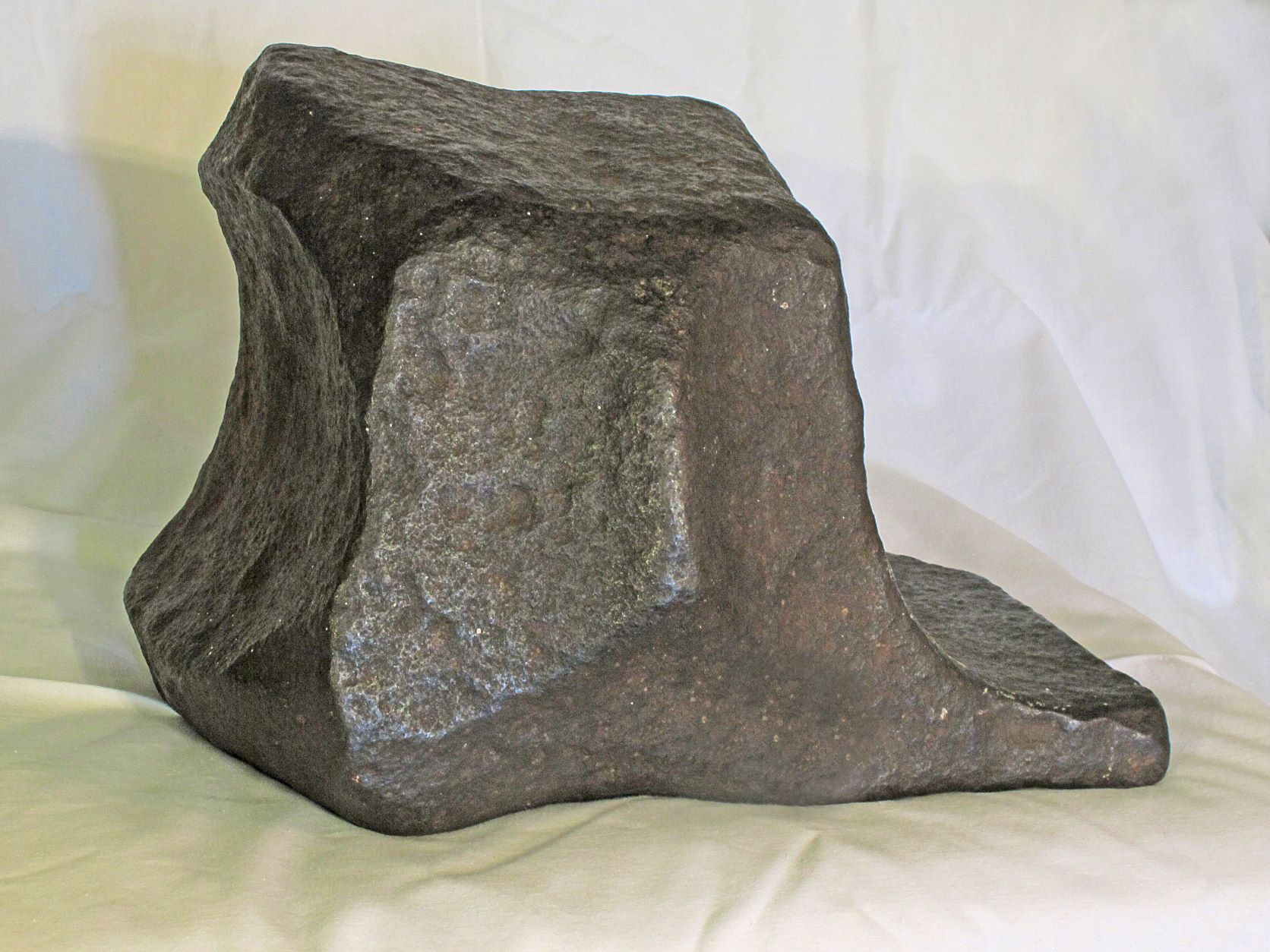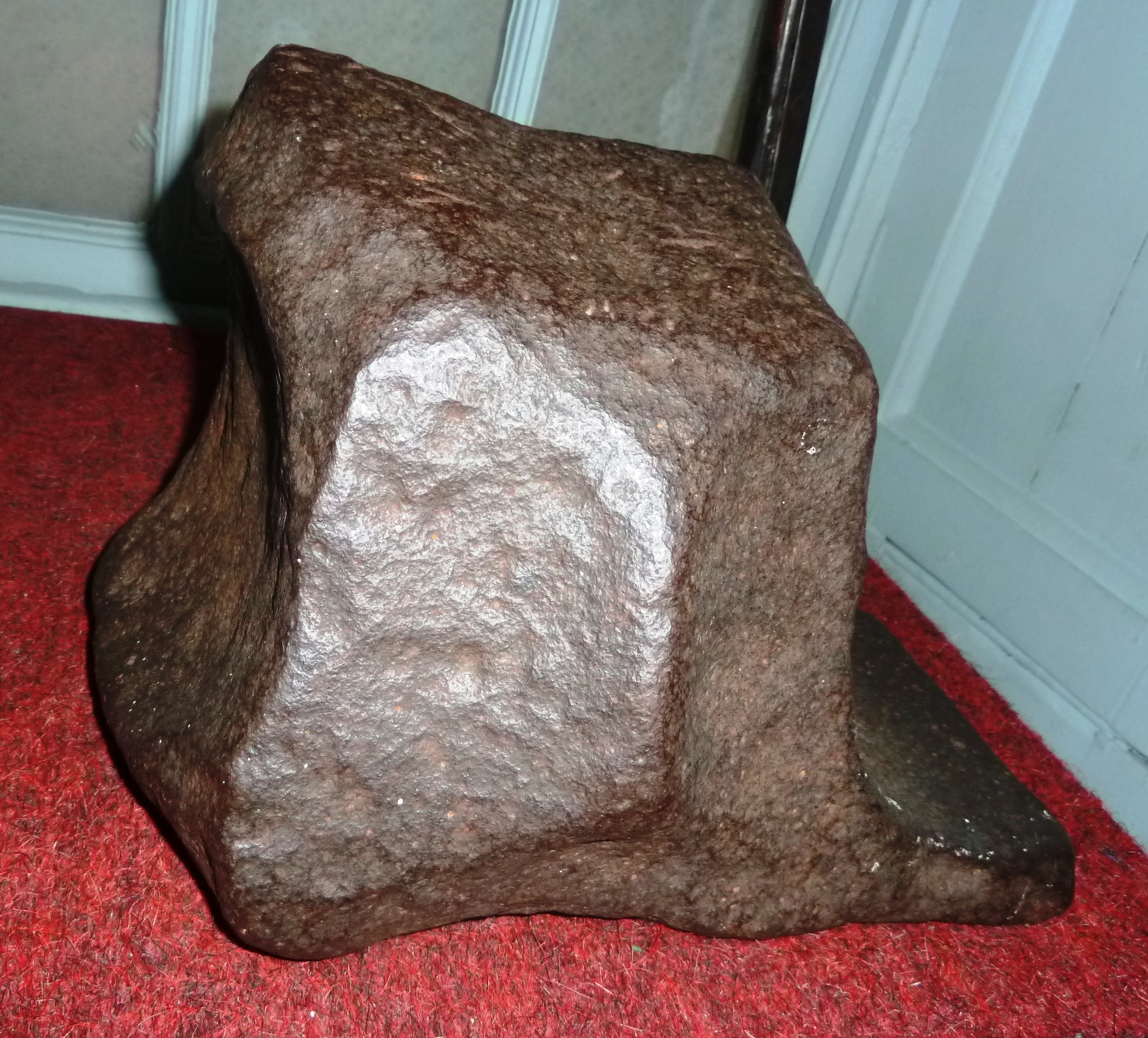Blog
Within the Museum stands a mysterious block of iron known as the 'Clanranald anvil'. Amid a haze of folklore, we can discern something intriguing, something Gaelic, and something most certainly worth studying closely and carefully.
The story begins in the 1920s when the 'Clanranald anvil' was found by a man named John MacDonald among the remains of a deserted settlement at Upper or High Mingarry on the rugged and remote Moidart peninsula in the western Highlands. It was then given to the parish priest, one Father Campbell, who kept it on the outside windowsill of his house for many years. In the early 1980s it was displayed in a thatched building known as Cnoc Breac, which had become a museum. Then, in 1987, Canon Joseph Terry passed the 'Clanranald anvil' as a long-term loan to the West Highland Museum, the loan documentation describing the anvil (if that is what it is) as 'the property of the People of Moidart'.

 2 jpeg.jpg)
 Moidart was long a homeland of the MacDonalds of Clanranald, a formidable family group named after Ranald, a son of John, the 1st Lord of the Isles, who in the early 1370s was granted by his father the Lordship of Garmoran, which included Moidart. The High Mingarry settlement formed part of the Clanranald estates, and thus this hefty block of iron has come to bear the evocative nickname of the 'Clanranald anvil'.
Moidart was long a homeland of the MacDonalds of Clanranald, a formidable family group named after Ranald, a son of John, the 1st Lord of the Isles, who in the early 1370s was granted by his father the Lordship of Garmoran, which included Moidart. The High Mingarry settlement formed part of the Clanranald estates, and thus this hefty block of iron has come to bear the evocative nickname of the 'Clanranald anvil'.
On the strength of pictorial evidence, and from its condition, the 'Clanranald anvil' would seem to be at the very least pre-nineteenth century and perhaps as old as the fourteen of fifteen hundreds. The 'Clanranald anvil' is, as anvils go, fairly small. Standing almost 20cms high, it has a top working surface of about 30cm by 17cm. The 'Clanranald anvil' must be made of iron, the usual material for an anvil. Though small, the anvil is immensely heavy, weighing 43.7 kilograms, demonstrating the dense strength of the piece. Likewise when struck, the anvil is said to project a good clear ring, a traditional mark of an anvil's quality.
So there are a number of reasons for thinking this object is an anvil. Yet one big problem remains: could one actually use it as a tool? The 'Clanranald anvil' has no flat or straight edges - its entire surface is irregular and uneven. In short, it would not really work as an anvil. It is the lack of regular shape, and the presence of the scalloping which cover its surface, which suggests another identity for the object. Richard Furrer, an experienced blacksmith, suggests to me, very tentatively at this stage, that this is no anvil but possibly a piece of iron meteorite. Only scientific analysis of its metallurgy can fully answer this question, but staff at the Natural History Museum, on being shown photographs of the 'Clanranald anvil', admit the possibility that it may well be a meteorite.
This extraordinary hypothesis should not be regarded as a disappointment. Indeed, it throws open a whole new range of ideas and questions to consider, such as - how did it find its way to Moidart? Did it fall from the skies there, and was it kept as an exotic souvenir? Was it believed to have magical powers since it had, so to speak, fallen from the heavens? Or was it kept because it was a good piece of iron, having been forged in the earth's atmosphere? Meteorites and blacksmithing are by no means totally unconnected things, there being many accounts of swords, daggers, knives and other items being made from meteor iron.
Perhaps, then, the 'Clanranald anvil' was actually a piece of iron meteorite which someone in Moidart was intending to re-forge. A piece of pre-forged iron of this size would have been quite a find in the Highlands since Scotland's indigenous deposits of iron are, by and large not good enough to make an item requiring much resilience. More likely is that it is either part of an iron meteorite or a damaged or unfinished bit of ironwork from a local Highland smithy. There certainly were iron processing sites in the medieval and early modern Highlands, and a piece of iron slag, and what may be part of an iron bloomery kiln base, have been found in Mingarry: so clearly someone was working metal there, and perhaps the 'Clanranald anvil' was associated with them.
Whether or not it is an anvil, and whatever it is eventually revealed to be, the 'Clanranald anvil' is an important physical record of a lost society which was based around folklore, superstitions, feats of arms, warrior codes of honour, and belief in magical blacksmiths. Quite what role the 'Clanranald anvil' played in that society - whether as a tool, magical charm, exotic souvenir or something entirely different - is unclear, but it surely still has much to teach us.
Fergus Cannan
This is an edited extract from 'The Clanranald Anvil' by Fergus Cannan. (The Journal of the Antique Metalware Society, Vol. 21, 2013.) The complete article is available to read in the Museum's library.











